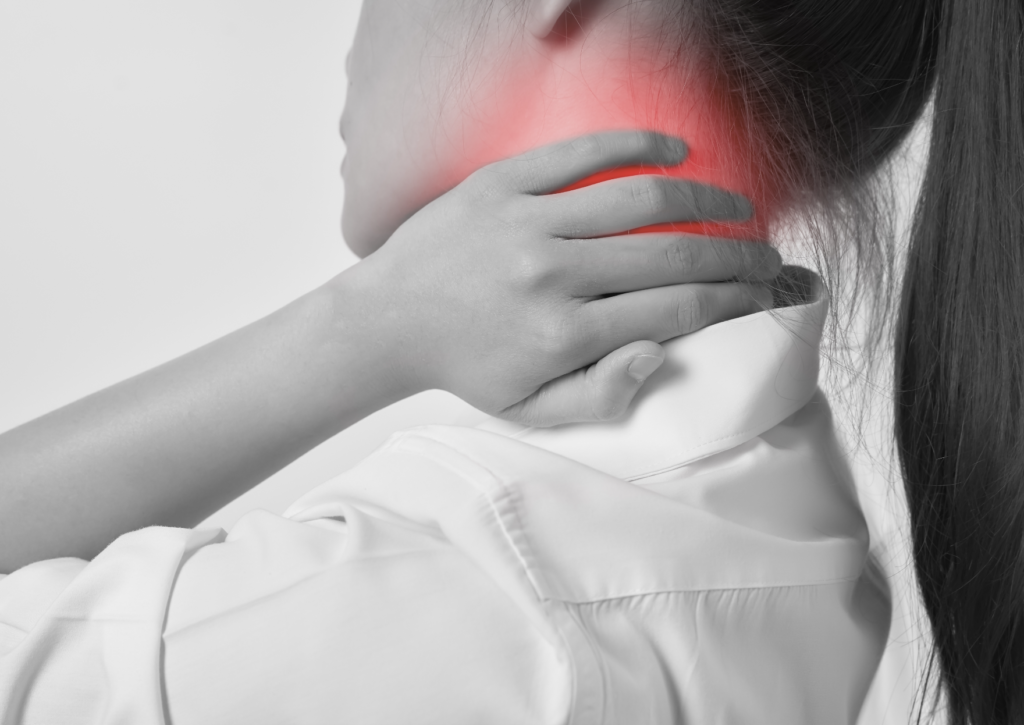CERVICAL RADICULOPATHY
If you suffer from chronic pain in the spine or neck, please Schedule an appointment with one of our orthopedic specialists as soon as possible.
 Cervical radiculopathy refers to a change in neurological function that results when a nerve root in the cervical spine gets inflamed or damaged.
Cervical radiculopathy refers to a change in neurological function that results when a nerve root in the cervical spine gets inflamed or damaged.
Symptoms for Cervical Radiculopathy
Neurological deficits, such as numbness, altered reflexes, or weakness, may radiate anywhere from the neck into the shoulder, arm, hand, or fingers. Morevoer, Pins-and-needles tingling and/or pain, which can range from achy to shock-like or burning, may also radiate down into the arm and/or hand.
However, if you suffer from any of the above symptom(s), consultant specialist ASAP.
Cervical Radiculopathy Causes and Risk Factors
When a foramen (bony opening where a nerve root exits the spinal canal) narrows, the nerve root has less space and may become impinged. This causes Cervical foraminal stenosis. However, degenerative changes related to cervical osteoarthritis and/or cervical degenerative disc disease may result in nearby bone spurs (osteophytes). This inturn, thickens ligaments, or causes a bulging disc that pushes against the nerve root in the foramen. Due to this cervical foraminal stenosis stands as the primary cause of cervical radiculopathy.
Morevoer, Cervical Herniated Disc can cause leakage of the inner material of the cervical disc, causing inflammation or impingement on the adjacent nerve, can lead to cervical radiculopathy. Injury or strenuous activity increases the likelihood of herniated discs, thus explaining why they constitute the most common cause in younger individuals, particularly those in their 20s or 30s.
The Course of Cervical Radiculopathy
Cervical radiculopathy, which includes pain, numbness, or weakness spreading from the neck to the arms, affects slightly more men than women and primarily occurs in older individuals due to spinal degeneration. The highest incidence is between ages 50 and 54. In younger individuals, disc herniation or injury commonly causes this condition. It develops when a nerve root in the cervical spine becomes compressed or inflamed, often due to herniated discs or bone spurs.
Timely diagnosis and proper treatment, ranging from conservative therapies like physical therapy to surgical interventions such as cervical discectomy, can relieve symptoms and prevent long-term complications. Understanding these demographic and causal factors helps tailor effective management strategies for cervical radiculopathy across various age groups and populations.
Cervical Radiculopathy Treatment
A wide range of treatment options exists for cervical radiculopathy. The choice of treatment primarily depends on the underlying cause of the patient’s symptoms and the severity of those symptoms.
Anterior cervical discectomy and fusion (ACDF)
This surgical procedure involves making a small incision in the front of the neck to remove the herniated or damaged disc. Subsequently, the affected level of the cervical spine is fused to restore normal height, providing ample space for spinal nerves and ensuring neck stability. Surgeons most commonly use this surgery to alleviate symptoms of cervical radiculopathy.
Artificial disc replacement
Instead of doing a fusion, this surgery replaces the problematic disc with an artificial disc. This procedure offers a potential benefit as it aims to preserve mobility at the level of the cervical spine instead of fusing two vertebrae together.
Neck surgery to reduce hand and arm pain/numbness tends to have a high success rate—some estimates in literature put the success rate between 80% and 90%. As with any surgery, there are some risks that will first need to be discussed with the surgeon. It is also important to ask about the surgeon’s experience and what to expect for that particular surgery.
Cervical Radiculopathy Recovery
Recovering from cervical radiculopathy involves a comprehensive approach aimed at reducing pain, restoring function, and preventing recurrence. Treatment options vary based on the severity of symptoms and underlying causes. However, it can commonly include physical therapy to improve neck and arm strength, flexibility, and posture. Patients may also benefit from nonsteroidal anti-inflammatory drugs (NSAIDs) or muscle relaxants to manage pain and discomfort.
For more severe cases or those that do not respond to conservative measures, corticosteroid injections or surgical interventions may deem necessary. This will alleviate nerve compression. Post-surgery, rehabilitation focuses on gradual reintroduction of activities and exercises to rebuild strength and range of motion.
Long-term recovery from cervical radiculopathy often involves ongoing management of spinal health through ergonomic adjustments, regular exercise, and lifestyle modifications. With proper care and adherence to treatment plans, many individuals experience significant improvement in symptoms and function. This allows them to resume normal activities and maintain a good quality of life.

